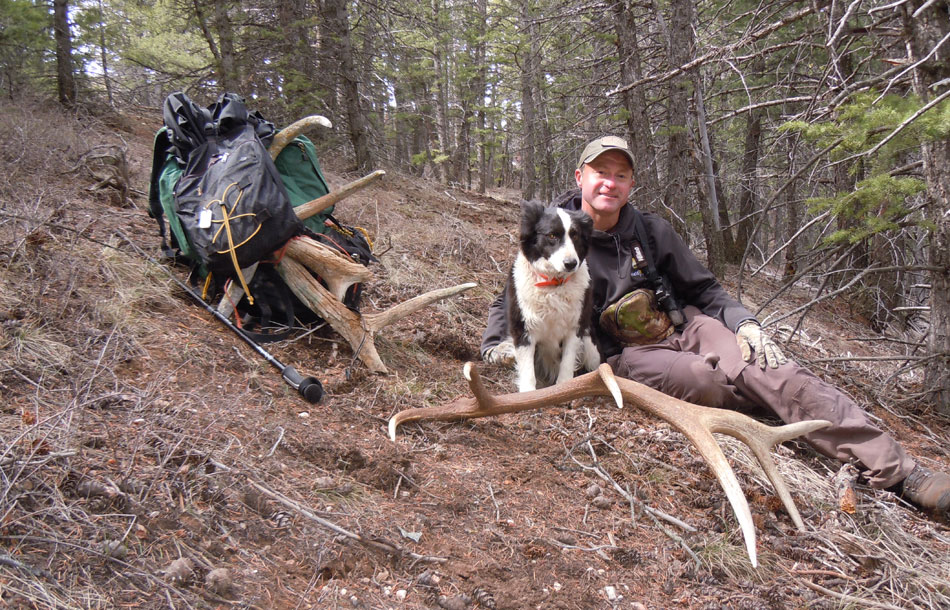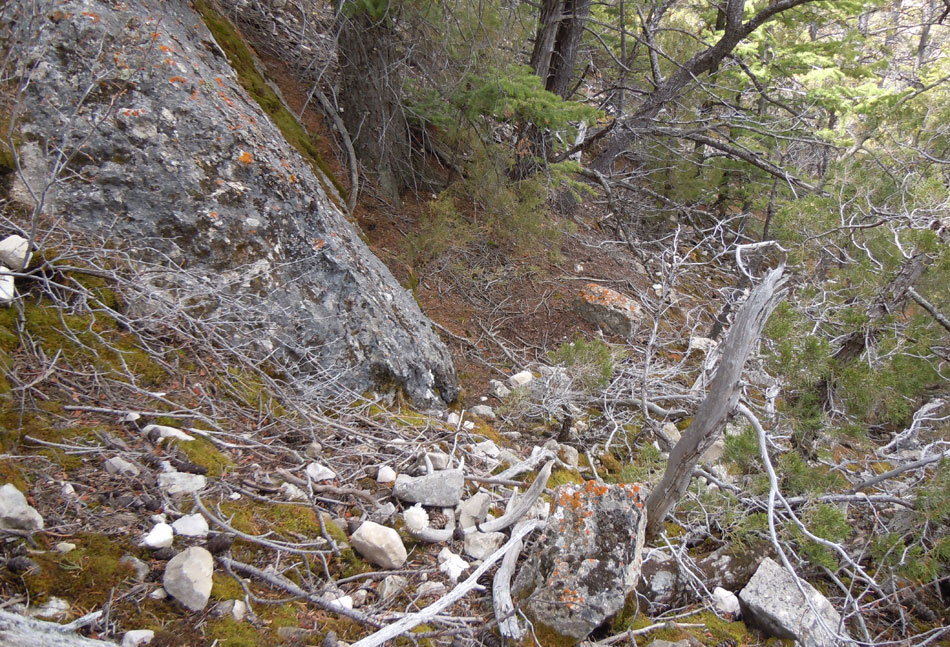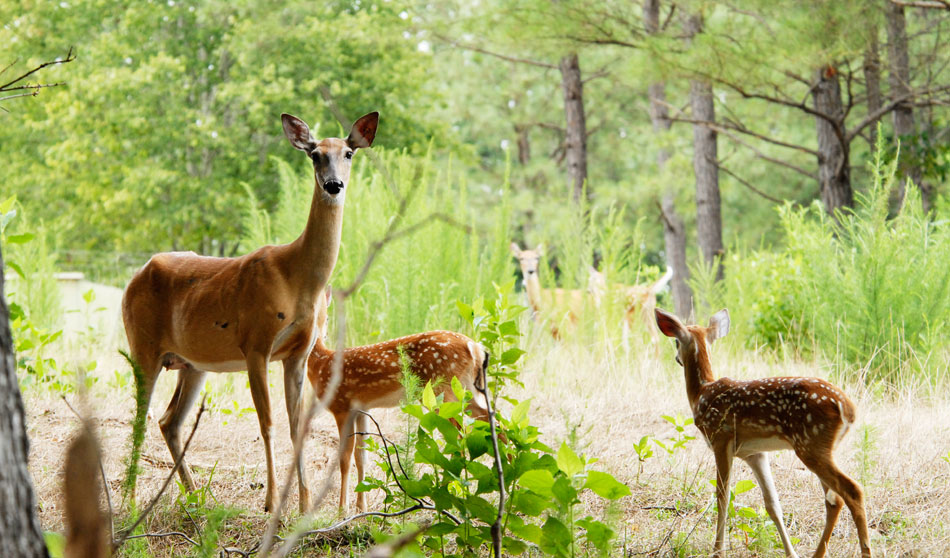Mark Kayser

Shed Hunting Tips the Western Way
Hunting for whitetail shed antlers dominates the antler scene, but like dreaming about a western elk hunt, shed antler fanatics consider hunting for elk and mule deer shed antlers a bucket-list adventure. Hunting for elk and mule deer sheds is a surefire way to enjoy western scenery in a personal manner, and possibly pick up more bone than you ever imagined. Even so, elk and mule deer country can be harsh and testing so plan accordingly. Start your planning by scheduling for the right time of year.
When Do Elk and Mule Deer Drop Their Antlers?
Like whitetail deer, elk and mule deer shed their antlers via a combination of factors. Genetics drives antler shedding to a specific date, but a male’s use of testosterone also factors into the equation. The more testosterone a male uses during the rut, the more likely it is to drop earlier. Stress, particularly from winter and predation, influences animals to drop their antlers earlier than normal, especially under severe conditions.
The two species shed their antlers in a different time frame. Mule deer shed their antlers from January into March. Elk, on the other hand, begin shedding their antlers in March through April, although it can occur as early as mid-February.
It’s really up to Mother Nature when the antler drop occurs, but if you’re lucky occasionally both antlers drop near one another, deer and elk. With large bull elk the phenomena seems more commonplace. It’s possibly due to the heavier weight of an elk antler and the lopsided feeling that comes from carrying just one antler. If you do find a single, large elk or mule deer antler, spend a few extra minutes gridding the area. The other side is likely close.
Shortcuts for Western Shed Hunters
Despite a shedding time frame that doesn’t overlap, you can still slate a trip later in spring and look for antlers from both species. Depending on the area you target, oftentimes you’ll find mule deer antlers one level below where you’ll find elk antlers. It’s possible they’ll winter up to 1,000 feet lower in elevation depending on the winter range.
Don’t let the elevation factor scare you away. Although elk and mule deer definitely look for elevated hideouts when seeking winter refuge, they also gravitate toward large mesas, and sagebrush basins. Research regions characterized by minimal snow and feeding areas for the animals. State game and fish agencies even manage these areas realizing that the ungulates visit them annually. Many of these areas have been allotted refuge status with no human access until spring arrives. Most have a posted opening date that attracts local and visiting shed hunters alike. It’s the chance at a grand Easter egg hunt in antler style when the opening date arrives. State game managers are also helpful in pointing out other winter preferences for elk and mule deer if you wish to avoid a Boston Marathon shed antler hunt.
The best advice for any Western shed antler hunter is to spend wisely on good optics. It’s amazing how many antlers you can discover simply by looking down slopes or across canyons. Focus on white objects and partial tips protruding from brush or grass. My favorite optic to carry is the Nikon Monarch HG10x42 with enough power to pick apart the landscape when looking for antlers.
Next, make sure you’re in shape. My average day is a 12-mile round trip hike. Half is straight up and most is side-slope navigation. Sturdy, leather hiking boots and a hiking staff is a must. I trust my Cabela’s Meindl Perfekt boots to get me in and out. You also need to outfit yourself with a durable and comfortable pack. It needs enough room for water, lunch, rain gear, survival gear and first aid. It should also have ample areas to lash antlers.
To speed up your antler discoveries begin by following big game trails. Both elk and deer use trails to navigate to winter forage. Although either species has no aversion to pioneering a new route, the path of least resistance does have appeal and trails are carved into mountain sides from eons of use.

These trails undoubtedly lead to open areas for feed, but don’t overlook where the trail disappears into timber. Elk and mule deer spend more time on south-facing slopes, but they have to traverse north-facing slopes to get to any new, windswept, south-facing food stash. North-facing slopes vary from dark timber to juniper-jammed terrain. In most northern latitudes, north-facing slopes are always defined by deep snow. Again, follow the path of least resistance and look for any antlers dropped along the route.
As you negotiate winter range, you’ll obviously encounter geographic features such as steep canyons and gorges. Avoid them if the ascent looks dangerous, but steep topography and ravines cause jarring and jolting, both of which can make an animal drop an antler in an abyss. Lace up, slide down and cover more ground for a look if you deem it safe.
Lastly, you may need to put your binoculars aside and snoop like on whitetail properties for shed antlers thick vegetation. Sagebrush, mountain mahogany, scrub oak, thick junipers and even stands of cholla cactus could hide elk and mule deer antlers. They create micro environments to shield from winter winds, plus supply food sources.
Sell Your Shed Antlers
Finding antlers can pay off. Antler prices have risen in recent years. The antler market fluctuates like the Dow Jones Industrials, but artisans, dog-chew companies, collectors and others purchase antlers on a regular basis. Deer antler prices have been fluctuating between $8 and $12 per pound in recent years. Elk antlers could fetch you anywhere from $12 to $15 per pound. That’s appealing since a big elk antler may weigh nine pounds netting you more than $120 for just one antler.
Even with the possibility of a paycheck at the end of a shed antler hunt, the reward for a western adventure far outweighs cash. Picking up a shiny, six-point elk antler while you overlook a scene from the opening of a John Wayne movie is the true reward.



























